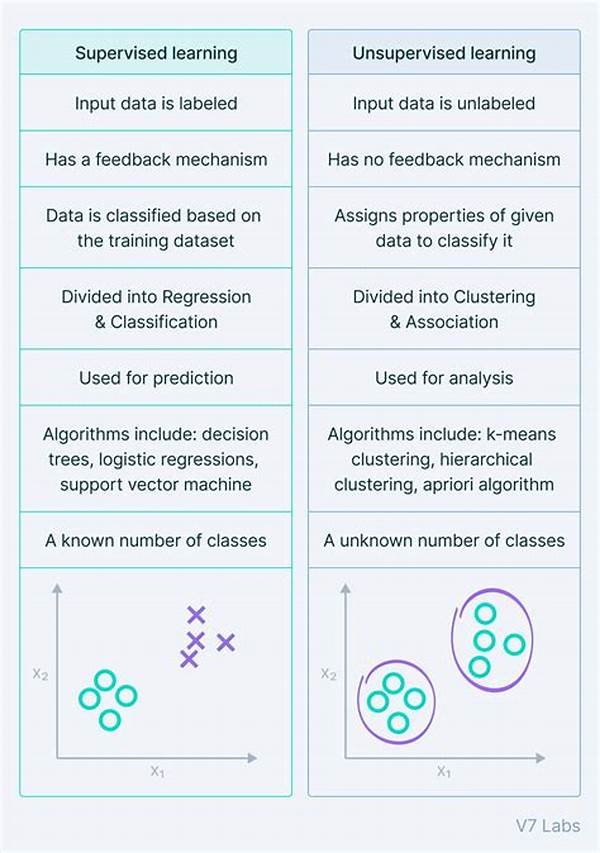Hey there, fellow data enthusiasts! Today, we’re diving into a fascinating discussion on machine learning’s two popular methodologies: supervised and unsupervised learning. If you’re new to these concepts or a seasoned pro looking to brush up on the latest insights, you’ve come to the right place. So, grab a coffee, sit back, and let’s explore the comparison of supervised and unsupervised learning.
Understanding the Basics
Let’s kick things off by breaking down what supervised and unsupervised learning actually entail. In the world of supervised learning, think of it as the teacher-student relationship. You have labeled data, which means each data point is associated with a specific output. The algorithm learns from this labeled data to make predictions. Picture teaching a child to identify fruits: you show them an apple and tell them it’s an apple, so they learn to recognize apples.
In contrast, unsupervised learning is more of an independent exploration. It deals with unlabeled data, meaning the algorithm has to figure out the hidden patterns or structures by itself. Imagine giving that child a basket of mixed fruits without any labels. They’ll need to categorize the fruits based on features like color, size, or shape. The comparison of supervised and unsupervised learning boils down to the presence or absence of labeled data and how algorithms are trained to interpret that data.
Key Differences in Training
When discussing the comparison of supervised and unsupervised learning, it’s crucial to highlight how their training mechanisms differ significantly. Supervised learning requires a training set of labeled data, whereas unsupervised learning operates with unlabeled data, all while seeking patterns and anomalies.
Applications in Real Life
Now, let’s discuss the practical side of things. In fields like finance and healthcare, supervised learning shines because of its predictive capabilities. Whether it’s predicting stock prices or diagnosing diseases, the comparison of supervised and unsupervised learning reveals that having labeled outcomes gives supervised learning an edge in accuracy.
Unsupervised learning, on the other hand, excels in scenarios where uncovering hidden structures or generating insights is key. Think about customer segmentation in marketing or identifying anomalies in network security. This method thrives in environments where patterns aren’t readily apparent, allowing businesses to make sense of complex data sets.
Choosing the Right Approach
The million-dollar question: when should you choose supervised or unsupervised learning? The comparison of supervised and unsupervised learning often comes down to your specific needs and available data. If you have a clear outcome in mind and labeled data at your disposal, supervised learning is your go-to. However, if you’re embarking on a data exploration journey with unknown patterns, unsupervised learning is invaluable.
Pros and Cons Overview
So, what are the pros and cons when making a comparison of supervised and unsupervised learning? Supervised learning boasts accuracy and precision, thanks to its training on labeled data. However, it can be resource-intensive and requires a significant amount of labeled data for effectiveness. Meanwhile, unsupervised learning, while less accurate, provides flexibility and adaptability, ideal for exploratory data analysis.
Real-World Impact and Innovations
In recent years, the ever-evolving landscape of artificial intelligence has witnessed incredible innovations in both supervised and unsupervised learning. The comparison of supervised and unsupervised learning becomes more pertinent as new algorithms emerge, reshaping industries and driving efficiency. From natural language processing to autonomous vehicles, these methodologies are paving the way for futuristic advancements.
Wrapping It Up
To sum it all up, the comparison of supervised and unsupervised learning provides invaluable insights into how these methodologies function and where they shine. Whether you’re predicting outcomes with high precision or uncovering hidden patterns, both approaches have their unique advantages. Selecting the right method depends on your goals, data availability, and need for accuracy versus exploration. So, keep experimenting and innovating in this dynamic field, and who knows what groundbreaking discoveries you might make next!

